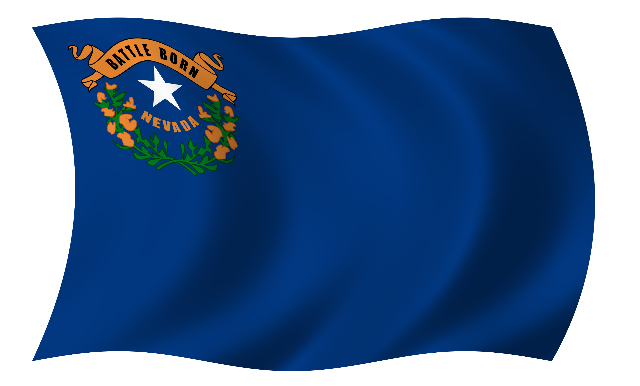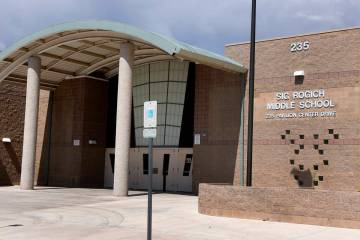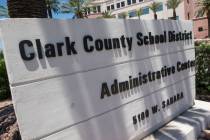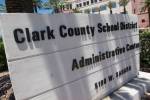Nevada’s new super-data system makes school records permanent
For the past decade, education officials in Nevada have eyed with envy the sprawling data systems other states have built to empower teachers, researchers and parents with unprecedented access to information about their students.
Kentucky, for example, offers publicly available reports that track how well high schools prepare students for college and what happens to graduates when they enter the workforce. Parents and educators there can explore which type of students actually make it to college and what wage to expect with a given degree.
In Chicago, researchers use early-warning indicators — such as credit completion and course failures — to identify which ninth-graders may not graduate on time or at all. Teachers and principals then offer individualized interventions to help get them back on track.
Nevada has similar information but keeps it in different silos maintained by each agency that collects specific sets of data.
Educators say the status quo hamstrings efforts to analyze how costly education initiatives impact students from different socioeconomic backgrounds and whether they succeed in college and at work.
That all changes on Wednesday, when the Silver State debuts a new super-data system that connects information from the moment a student starts preschool to high school graduation, acceptance to a university and eventually the first day of work.
"These are still just baby steps," said Linda Heiss, senior director of institutional research at the Nevada System of Higher Education. "But honestly, now we're leading the way. We're one of five (states) that have taken something like this, this far."
'GREAT POTENTIAL'
Nevada historically has trailed most states in the collection, linkage and dissemination of useful education data.
In 2011, the Data Quality Campaign, which promotes the use of student data to improve achievement, found Nevada only completed four to five of 10 recommended steps to reach that goal. In 2014, as 32 other states rushed to complete seven to 10 steps, Nevada was deemed to have made no progress.
Last year, only 19 states linked kindergarten through 12th grade to workforce data and even fewer used that information to produce quality research. Nevada this week joins that exclusive club with its so-called Nevada P-20 Workforce Report, or NPWR.
"This has great potential for Nevada," said Kim Metcalf, dean of the College of Education at UNLV.
"The ability to examine the relationship between educational and demographic and employment and student outcomes, among various factors, is going to be great for everybody," he added.
The three agencies that will feed data into the system — the Nevada Department of Education, the Nevada System of Higher Education and the Nevada Department of Employment, Training and Rehabilitation — must approve each request before a researcher can view the data, which is stripped of any personally identifiable information to protect student privacy.
Researchers must remain patient — an advisory council created by Gov. Brian Sandoval first must prioritize what questions or topics to study using the new database.
"I'm really interested in understanding the relationship to workforce and trying to appreciate what skills and coursework are the right steps for children along their K-12 career," said Steve Canavero, deputy superintendent for student achievement at the Nevada Department of Education. "How can we ensure our children are successful when they compete for jobs and when the industry asks for a certain set of skills?"
'JUST THE BEGINNING'
NPWR's roots date to 2007, thanks in part to two federal grants totaling nearly $10 million. How much it will cost in the future was unavailable last week.
Student data, from kindergarten through college in particular, has captured the attention of educators across the nation as they attempt to imitate private-sector organizations that use numbers and trends to measure the success of their decisions.
Nevada education officials aim to do just that and will invite the public's help.
Starting Wednesday, the NPWR website, npwr.nv.gov, will offer several open databases that agencies previously published on reams and reams of paper.
The reports detail which high schools produce the most graduates needing remedial education in college; the rate of employment in each degree field and average salary; college continuation rates based on school district, high school and race; and more.
"This is just the beginning of how we can move more kids to success," said Heiss, of the Nevada System of Higher Education.
NPWR will produce data that principals and superintendents can use to modify their curriculum based on general student profiles to prevent the need for college remediation. Policymakers also can tap into NPWR to make decisions about high school graduation requirements.
Eventually, though, Heiss hopes NPWR will have enough public information to help parents train themselves to become better advocates for their children.
"All of us want this data to be accessible and in the hands of those who need it, whether that's parents or the (Nevada) Legislature or teachers or us," Heiss said.
"People shouldn't have to ask us for this information," she added. "We want people to get that data — and use it — to improve graduation rates, improve kids going on to college, improve the chances that a student will stay in Nevada and get a good job."
Contact Neal Morton at nmorton@reviewjournal.com or 702-383-0279. Find @nealtmorton on Twitter.




























